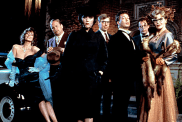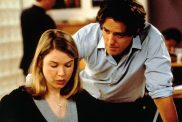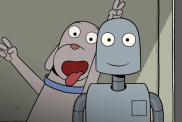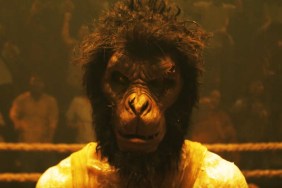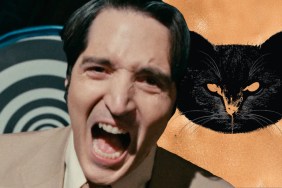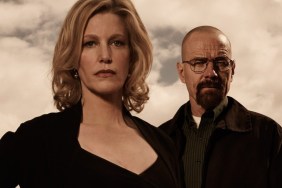
There were other things, such as the pod Jake is in and a lot of his interaction in there gave me a distinct “12 Monkeys” vibe straight down to some of the production design. And I’d say on some level the two films closely mirror one another.
DJ: I think that’s a fair assessment. I love 12 Monkeys, I think it’s probably Terry Gilliam’s best film and the pod itself is an environment where I could certainly see similarities, but we had some very different ideas on what that pod was supposed to be and how it’s supposed to work.
It starts off as something that’s — this is all spoiler territory — it’s obviously all a manifestation of Colter’s mind. It starts off as something recognizable, something like a cockpit and over the course of [the film] it grows into something more like a prison cell.
Now do you consider Source Code a time travel film at all? Do the rules of time travel apply in any way?
DJ: It’s difficult, because technically it’s a parallel reality film, but it is also time travel. It’s parallel reality, but the reality we’re going to, we’re going to a past event in that parallel reality. We’re in this world, Vera Farmiga and Jeffrey Wright are sending him to what they think is the last eight minutes of someone’s life, captured in a victim’s brain state, in Shawn Fentress’s brain state, but what they’re actually doing — by the end of the film — is they’re accessing a parallel reality, but still having to travel backwards in it because they’re having to go to this event on the train. Then he is able to create this new reality every time he gets sent to a new “Source Code.”

I’ve discussed something similar with a friend of mine, whether we thought time travel could be possible and our theories on why and why not. As it turns out, I think Source Code happens on a clever, new and potentially legit theoretical way to accomplish it.
DJ: Yeah, I think so. I guess on a quantum level the idea is, from what I understand of the theoretical physics of it, you can’t travel back in time, but what you can do is if you can access a parallel reality you could set events off on a different track that would be just as real as the reality we live in.
Which would create the split.
DJ: Which would create the split, but you’re not going back. When you create the split, you can side travel, you can’t go backwards in time. And we’re now getting into the heart of the mechanics that Ben Ripley was looking into, but my take on it was why bother trying to communicate those nuances to the audience? Let them enjoy the film. So what I did with the script was I lightened the tone, I injected some humor into it, I had an amazing leading man in Jake Gyllenhaal whom audiences can empathize with and I said, “Look, take that leap of faith with me that the physics and the science all works. Now just enjoy the ride.”
Which leads into one of my questions, a lot of films like this take what you and I are discussing right now and put it into the movie. They beat the mechanics of it all into the ground because they feel they need to legitimize how everything works in order for the audience to stick with it. You didn’t do that and we’re still having this conversation. Essentially, less is more.
DJ: I think exposition is a killer. It doesn’t even have to be sci-fi. Any kind of exposition can be a killer and you either have to be really smart about how you weave it into the natural dialogue or into a situation where it feels utterly organic, or you stay the hell away from it. If you don’t need it, get rid of it. It will kill a film.
I read you guys took a look at films such as Groundhog Day, Sliding Doors, etc. in terms of searching for balance with the source code scenes. Is that right?
DJ: That’s more Ben Ripley, that’s more on his front as far as the writing is concerned. I wasn’t watching those films. I’m obviously aware of them and seen them, but I was just going with it. I was just reading the script and going, “This would be cool” and having specific visuals and ideas. Actually in the Ben Ripley script, the script that I read, the flashbacks themselves are very different than what we did in the film.
There was this sort of metaphor of these blurry spokes on a wheel and as the camera tracks back it reveals a bicycle that’s leaning up against a wall of a train tunnel. That was what was originally in the script. It was also originally going to be set in New York and not Chicago.

Those opening shots of Chicago are phenomenal. I don’t think I’ve seen it look like that.
DJ: I love Chicago I think it’s a great city to be able to work in. But the sculpture, the Anish Kapor “Cloud Gate” sculpture, it’s known as “the bean”, that was something I basically had seen some pictures of and thought, Wow, does that really exist? That almost looks sci-fi. I want to involve that in here somehow. So I didn’t rewrite, I reinterpreted what Ben had in there as far as this flashback sequence, and turned it into something a little bit more surreal, a little bit weirder, and used “the bean” as my kind of location for this kind of romantic climax in the film.
